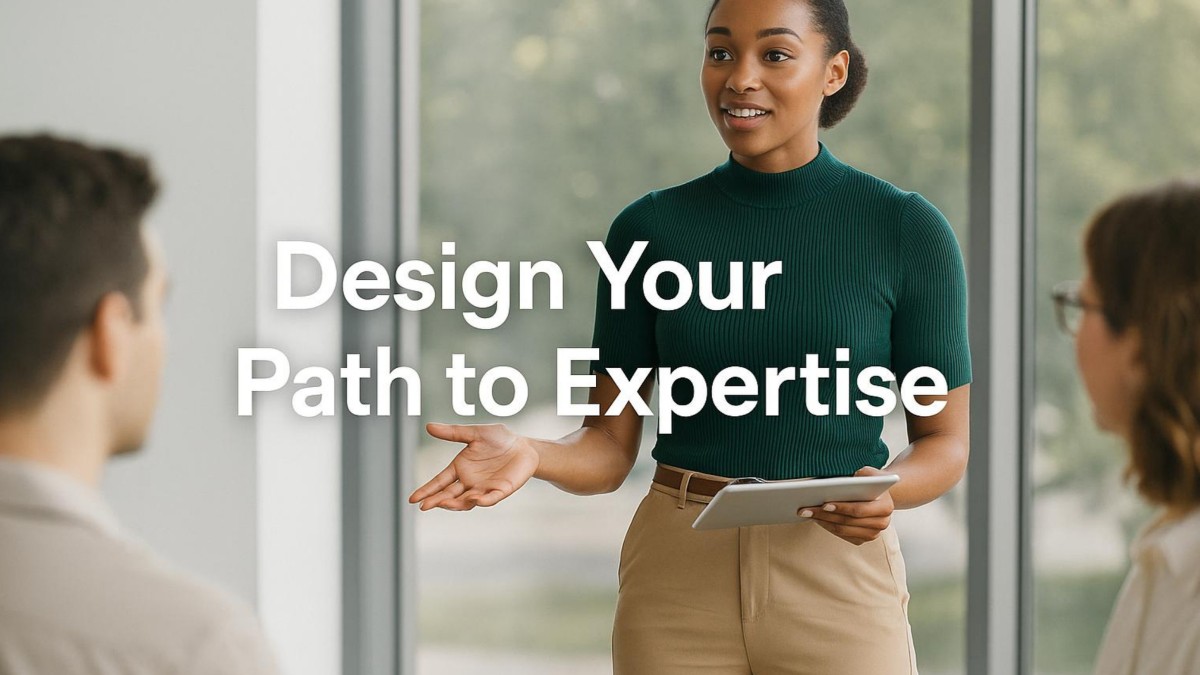Day 90 of The 100 Day Project: How to Become an Expert by Maurice Gibbons

Discover a 9-step roadmap to self-directed learning and mastery from How to Become an Expert by Maurice Gibbons.
When we think of an expert, we often picture someone with decades of experience, a wall of credentials, and the authority that takes years to build. But in How to Become an Expert, Maurice Gibbons disrupts that notion with a practical and encouraging message. Expertise is accessible to anyone willing to learn with intention. Originally written for students, the framework surprisingly applies for adult learners, professionals, and especially those in leadership roles seeking growth through self-direction.
Expertise Isn’t a Title—It’s a Process
The most valuable insight from Gibbons’ book is that becoming an expert is not about being the best in the world. It’s about becoming deeply competent and confident in a chosen area. This shift in perspective removes the intimidation and invites purposeful action.
Though some examples and technologies are dated, the core principles remain relevant. Its simplicity is part of its power.
Five Ways to Choose Your Expertise
One challenge aspiring experts face is figuring out what to become an expert in. Gibbons outlines five approaches to help you narrow down your options:
Personal Inventory – Reflect on your interests, experiences, and strengths.
Survey the Landscape – Look into emerging and established fields where your skills could thrive.
Brainstorm Freely – No judgment—just generate possibilities.
Shape a Vision – Imagine where you’d like to be one year from now.
Explore – Venture into unfamiliar areas with curiosity and courage.
This process helps clarify both passion and opportunity. It’s especially useful for professionals seeking reinvention or those leading teams who need to identify new areas for development.
From Idea to Execution: A 9-Step Roadmap
Once you’ve selected a focus, Gibbons provides a simple yet powerful planning process:
Define Your Learning Goal – What specifically do you want to know or do?
Choose a Challenge Product – What tangible project the your learning?
List Learning Activities – Books to read, people to observe, mentors to consult.
List Product Activities – Tasks to complete the challenge (e.g., writing, building, presenting).
Create a Timeline – Organize learning and doing into a realistic schedule.
Select an Accountability Partner – Share your plan with someone who will keep you on track.
Identify Your Target Audience – Who needs or will benefit from your expertise?
Pinpoint Your Success Factor – What will indicate that you’ve succeeded?
Plan to Celebrate – Acknowledge your accomplishment.
This structured approach turns a vague goal into a clear, actionable project. It’s the kind of method that aligns well with AOLLA’s commitment to applied knowledge and strategic learning.
Learning and Product Activities: Know the Difference
A moment of confusion while reading involved the distinction between “learning activities” and “product activities.” Gibbons doesn’t initially provide adult-relevant examples, but here’s how to think about it:
Learning Activities help you build understanding (e.g., research, conversations, training).
Product Activities are where you apply your knowledge to produce a result (e.g., writing a report, launching a service, teaching a class).
Both are essential. One builds capacity; the other proves it.
Final Thoughts: Mastery by Design
What makes How to Become an Expert valuable is not just the system. It’s the mindset. Expertise is not granted by others. It’s built by you. This book encourages lifelong learners to take ownership of their growth and to transform curiosity into competence.
In the spirit of AOLLA, this book reminds us that leadership starts with learning—and the best learning happens when you design your own journey.
👉 Ready to turn reading into leadership?
Join us at AOLLA.info and start building your expertise today.
If you want access to my Bookish Notes, please consider joining my membership site, the Art of Learning.
This post contains affiliate links and The Invisible Mentor® may earn commissions for purchases made through links in this post. For more details, see here.
Categories: : personal development, professional growth, self-directed learning
 Avil Beckford
Avil Beckford 